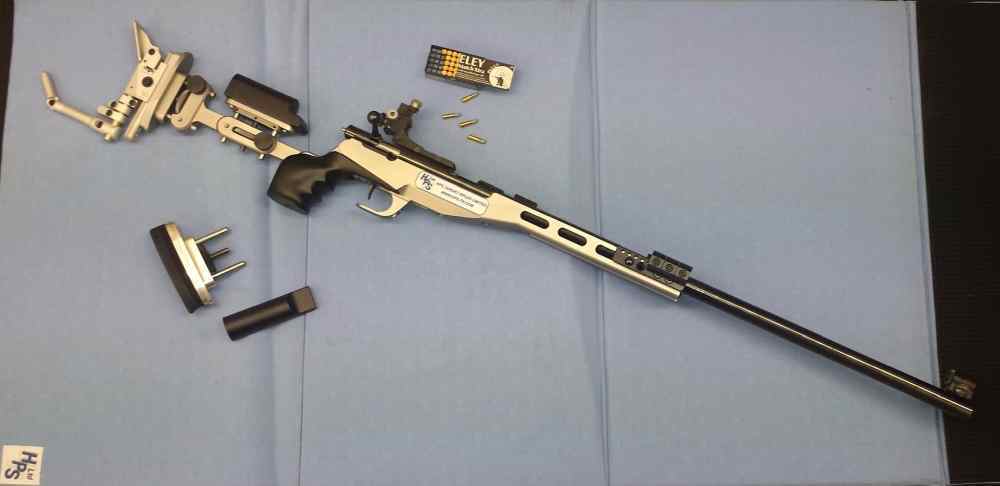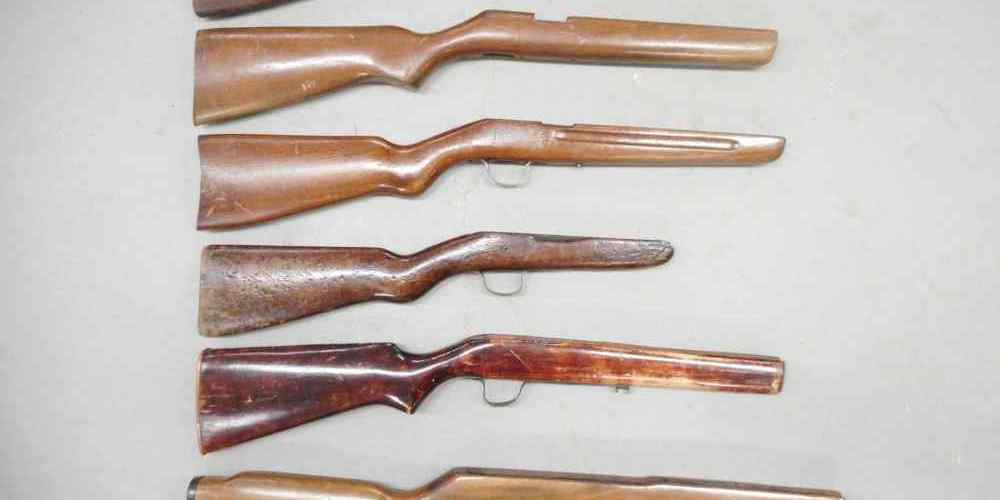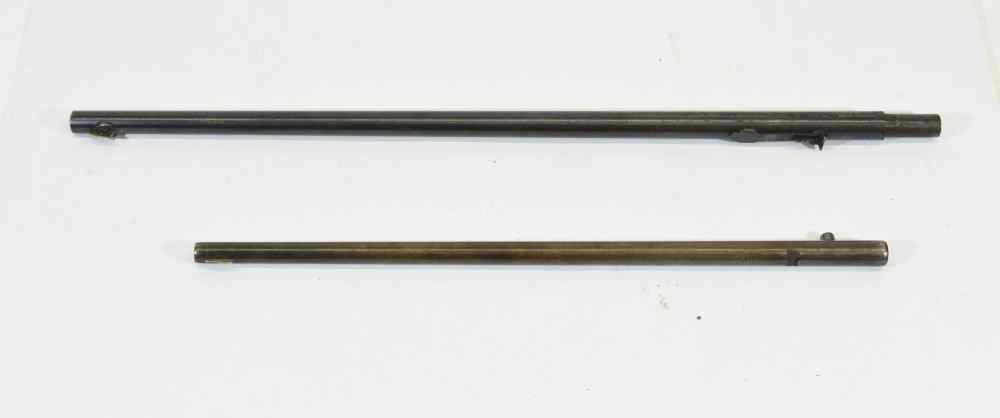Strength, precision, and reliability – all in the materials of your rifle parts.
Types of Metals Used in Rifle Parts
When it comes to rifles, the materials used in their construction play a crucial role in their performance and durability. Material science is a key factor in determining the quality and reliability of rifle parts. In this article, we will explore the different types of metals commonly used in rifle parts and their unique properties.
One of the most popular metals used in rifle parts is steel. Steel is known for its strength and durability, making it an ideal choice for critical components such as barrels, receivers, and bolts. Steel is also relatively affordable and easy to work with, making it a versatile option for rifle manufacturers. Additionally, steel can be heat-treated to improve its hardness and wear resistance, further enhancing the performance of rifle parts.
Another common metal used in rifle parts is aluminum. Aluminum is lightweight and corrosion-resistant, making it a popular choice for components such as handguards, scope mounts, and trigger guards. While aluminum is not as strong as steel, it offers a good balance of strength and weight, making it suitable for certain applications in rifle construction. Aluminum can also be anodized to improve its surface hardness and appearance.
Titanium is another metal that is sometimes used in rifle parts. Titanium is known for its high strength-to-weight ratio, making it an excellent choice for components that require both strength and lightness, such as muzzle brakes and bolt carriers. Titanium is also highly corrosion-resistant, making it a durable option for outdoor use. However, titanium is more expensive than steel or aluminum, which can drive up the cost of rifles that incorporate titanium components.
In recent years, polymer materials have become increasingly popular in rifle construction. Polymers are lightweight, durable, and corrosion-resistant, making them an attractive option for components such as stocks, handguards, and pistol grips. Polymers can also be molded into complex shapes, allowing for greater design flexibility in rifle construction. While polymers may not offer the same strength as metals, they can provide a cost-effective and lightweight alternative for certain rifle parts.
Ceramic materials are also used in some rifle parts, particularly in high-performance applications. Ceramics are extremely hard and wear-resistant, making them ideal for components such as bolt faces and firing pins. Ceramics can also withstand high temperatures and pressures, making them suitable for use in high-powered rifles. However, ceramics are brittle and can be prone to cracking under impact, so they are typically used in conjunction with other materials to improve their durability.
In conclusion, the materials used in rifle parts play a critical role in determining the performance and reliability of firearms. Steel, aluminum, titanium, polymers, and ceramics each offer unique properties that make them suitable for different applications in rifle construction. By understanding the characteristics of these materials, rifle enthusiasts can make informed decisions when selecting firearms and accessories. Whether you prefer the strength of steel, the lightness of aluminum, or the durability of polymers, there is a material that will meet your needs in the world of rifle parts.
Benefits of Using Composite Materials in Gun Manufacturing
When it comes to rifle manufacturing, the materials used play a crucial role in determining the performance and durability of the firearm. In recent years, there has been a shift towards using composite materials in gun manufacturing due to their numerous benefits. Composite materials are made by combining two or more materials with different properties to create a stronger, lighter, and more durable material. This article will explore the benefits of using composite materials in rifle parts and why they are becoming increasingly popular in the firearms industry.

One of the main advantages of using composite materials in gun manufacturing is their strength-to-weight ratio. Composite materials are incredibly strong and can withstand high impact forces without deforming or breaking. This makes them ideal for use in rifle parts that are subjected to a lot of stress, such as barrels and receivers. Additionally, composite materials are much lighter than traditional materials like steel or aluminum, which can help reduce the overall weight of the firearm and make it easier to handle and carry.
Another benefit of using composite materials in gun manufacturing is their resistance to corrosion and wear. Traditional materials like steel are prone to rust and corrosion, especially when exposed to harsh environmental conditions. Composite materials, on the other hand, are highly resistant to corrosion and can withstand exposure to moisture, saltwater, and other corrosive substances. This makes them ideal for use in rifles that are used in outdoor environments or in marine applications.
Composite materials also offer greater design flexibility compared to traditional materials. Manufacturers can easily mold composite materials into complex shapes and designs, allowing them to create innovative and ergonomic rifle parts that are both functional and aesthetically pleasing. This flexibility also allows for the integration of additional features like picatinny rails, adjustable stocks, and other accessories that enhance the performance and usability of the firearm.
In addition to their strength, light weight, and corrosion resistance, composite materials also offer excellent thermal and electrical insulation properties. This can help improve the overall performance and reliability of the firearm, especially in high-temperature environments or when using electronic components like optics or laser sights. Composite materials can also dampen vibrations and reduce noise, which can help improve accuracy and reduce shooter fatigue.
Overall, the benefits of using composite materials in gun manufacturing are clear. They offer superior strength-to-weight ratio, corrosion resistance, design flexibility, and thermal and electrical insulation properties that make them ideal for use in rifle parts. As the firearms industry continues to evolve and innovate, we can expect to see more rifles and firearm accessories made from composite materials. So the next time you’re shopping for a new rifle, be sure to consider the material science behind the gun and choose one that is made from composite materials for superior performance and durability.
The Role of Polymers in Enhancing Rifle Performance
When it comes to rifles, the materials used in their construction play a crucial role in determining their performance and durability. While metals like steel and aluminum have traditionally been the go-to materials for rifle parts, advancements in material science have led to the incorporation of polymers in rifle design. Polymers are versatile materials that offer a range of benefits, including lightweight construction, corrosion resistance, and enhanced durability. In this article, we will explore the role of polymers in enhancing rifle performance and discuss some of the key polymer components found in modern rifles.
One of the primary advantages of using polymers in rifle parts is their lightweight nature. Compared to traditional metal components, polymer parts are significantly lighter, which can help reduce overall rifle weight and improve handling and maneuverability. This is particularly important for shooters who may need to carry their rifles over long distances or for extended periods of time. Additionally, the lightweight nature of polymers can also help reduce fatigue during extended shooting sessions, allowing shooters to maintain accuracy and precision for longer periods.
In addition to being lightweight, polymers are also highly resistant to corrosion. Unlike metals, which can rust and degrade over time when exposed to moisture and other environmental factors, polymers are inherently resistant to corrosion. This makes them an ideal choice for rifle components that may be exposed to harsh conditions, such as hunting in wet or humid environments. By using polymer parts in key areas of the rifle, manufacturers can help ensure that the weapon remains reliable and functional even in challenging conditions.
Another key benefit of using polymers in rifle parts is their durability. Polymers are known for their toughness and resilience, making them well-suited for high-stress applications like firearms. By incorporating polymer components into the design of a rifle, manufacturers can help improve the overall durability and longevity of the weapon. This can result in fewer maintenance issues and a longer service life for the rifle, ultimately saving shooters time and money in the long run.
There are several key polymer components that are commonly found in modern rifles. One of the most common is the polymer stock, which serves as the main body of the rifle and provides a comfortable and stable platform for shooting. Polymer stocks are available in a variety of shapes and configurations, allowing shooters to customize their rifle to suit their individual preferences and shooting style. Additionally, polymer handguards are often used to protect the shooter’s hands from the heat generated by the barrel during rapid fire.
In conclusion, polymers play a crucial role in enhancing rifle performance by providing lightweight construction, corrosion resistance, and enhanced durability. By incorporating polymer components into the design of a rifle, manufacturers can create weapons that are reliable, accurate, and comfortable to shoot. Whether you are a seasoned hunter or a competitive shooter, the use of polymers in rifle parts can help take your shooting experience to the next level. So, the next time you pick up your rifle, take a moment to appreciate the role that polymers play in its performance and reliability.
How Surface Treatments Improve the Durability of Rifle Components
When it comes to rifles, durability is key. Whether you’re a hunter, a competitive shooter, or a gun enthusiast, you want your rifle to be able to withstand the rigors of use and last for years to come. That’s where surface treatments come in. By applying specialized coatings and finishes to rifle components, manufacturers can significantly improve their durability and performance.
One of the most common surface treatments used in rifle parts is cerakote. Cerakote is a ceramic-based coating that provides excellent protection against corrosion, abrasion, and impact. It is also highly resistant to chemicals and solvents, making it ideal for use in harsh environments. Cerakote comes in a wide range of colors and finishes, allowing gun owners to customize their rifles to their liking.
Another popular surface treatment for rifle components is anodizing. Anodizing is an electrochemical process that creates a protective oxide layer on the surface of aluminum parts. This oxide layer not only improves the durability of the parts but also enhances their appearance. Anodized parts are available in a variety of colors and can be matte or glossy, depending on the desired finish.
In addition to cerakote and anodizing, there are other surface treatments that can be used to improve the durability of rifle components. For example, nitriding is a process that diffuses nitrogen into the surface of steel parts, creating a hard and wear-resistant layer. Nitrided parts are highly resistant to corrosion and abrasion, making them ideal for use in high-stress applications.
Another common surface treatment for rifle components is parkerizing. Parkerizing is a chemical conversion coating that creates a layer of phosphate on the surface of steel parts. This layer provides excellent protection against corrosion and wear, making parkerized parts ideal for use in harsh environments.
In addition to improving durability, surface treatments can also enhance the performance of rifle components. For example, coatings such as Teflon and DLC (diamond-like carbon) can reduce friction and improve the overall efficiency of moving parts. This can result in smoother operation, increased accuracy, and reduced maintenance requirements.
Overall, surface treatments play a crucial role in enhancing the durability and performance of rifle components. By applying specialized coatings and finishes, manufacturers can ensure that their rifles are able to withstand the rigors of use and last for years to come. Whether you’re a hunter, a competitive shooter, or a gun enthusiast, investing in a rifle with quality surface treatments is a smart choice. So, the next time you’re in the market for a new rifle, be sure to consider the materials and surface treatments used in its construction. Your rifle’s durability and performance will thank you.
Exploring the Future of Material Science in Rifle Design
Material science plays a crucial role in the design and construction of rifle parts. The choice of materials used in the manufacturing process can greatly impact the performance, durability, and overall quality of a firearm. In recent years, advancements in material science have led to the development of new and innovative materials that are revolutionizing the way rifles are made.
One of the most commonly used materials in rifle construction is steel. Steel is known for its strength, durability, and resistance to corrosion, making it an ideal choice for critical components such as barrels, receivers, and bolts. However, steel can be heavy and may not always offer the best balance of weight and strength for certain applications.
In response to this, manufacturers have begun to explore the use of alternative materials such as aluminum and titanium. These materials are lighter than steel, making them ideal for reducing the overall weight of a rifle without sacrificing strength or durability. Aluminum, in particular, is prized for its high strength-to-weight ratio, making it a popular choice for components such as handguards and receivers.
Another material that is gaining popularity in rifle construction is carbon fiber. Carbon fiber is an incredibly strong and lightweight material that offers excellent stiffness and resistance to heat and corrosion. It is commonly used in the construction of barrels, stocks, and other components where weight reduction and performance are critical.
In addition to traditional materials such as steel, aluminum, titanium, and carbon fiber, manufacturers are also exploring the use of advanced composites and polymers in rifle design. These materials offer unique properties such as high impact resistance, flexibility, and the ability to be molded into complex shapes. By incorporating these materials into rifle parts, manufacturers can create firearms that are not only lighter and more durable but also more ergonomic and aesthetically pleasing.
The use of advanced materials in rifle construction is not limited to the physical components of the firearm. Manufacturers are also exploring the use of advanced coatings and finishes to enhance the performance and longevity of rifle parts. For example, coatings such as Cerakote and DLC (diamond-like carbon) offer superior corrosion resistance, abrasion resistance, and lubricity, making them ideal for protecting critical components such as barrels and bolts.
As material science continues to advance, the possibilities for innovation in rifle design are virtually limitless. Manufacturers are constantly experimenting with new materials, coatings, and manufacturing techniques to push the boundaries of what is possible in firearm construction. Whether it’s developing a lighter, stronger barrel or a more ergonomic stock, the future of rifle design is bright with possibilities.
In conclusion, material science plays a critical role in the design and construction of rifle parts. By exploring the use of advanced materials such as aluminum, titanium, carbon fiber, composites, and polymers, manufacturers can create firearms that are lighter, stronger, and more durable than ever before. With the continued advancement of material science, the future of rifle design is sure to be filled with exciting innovations and breakthroughs.




